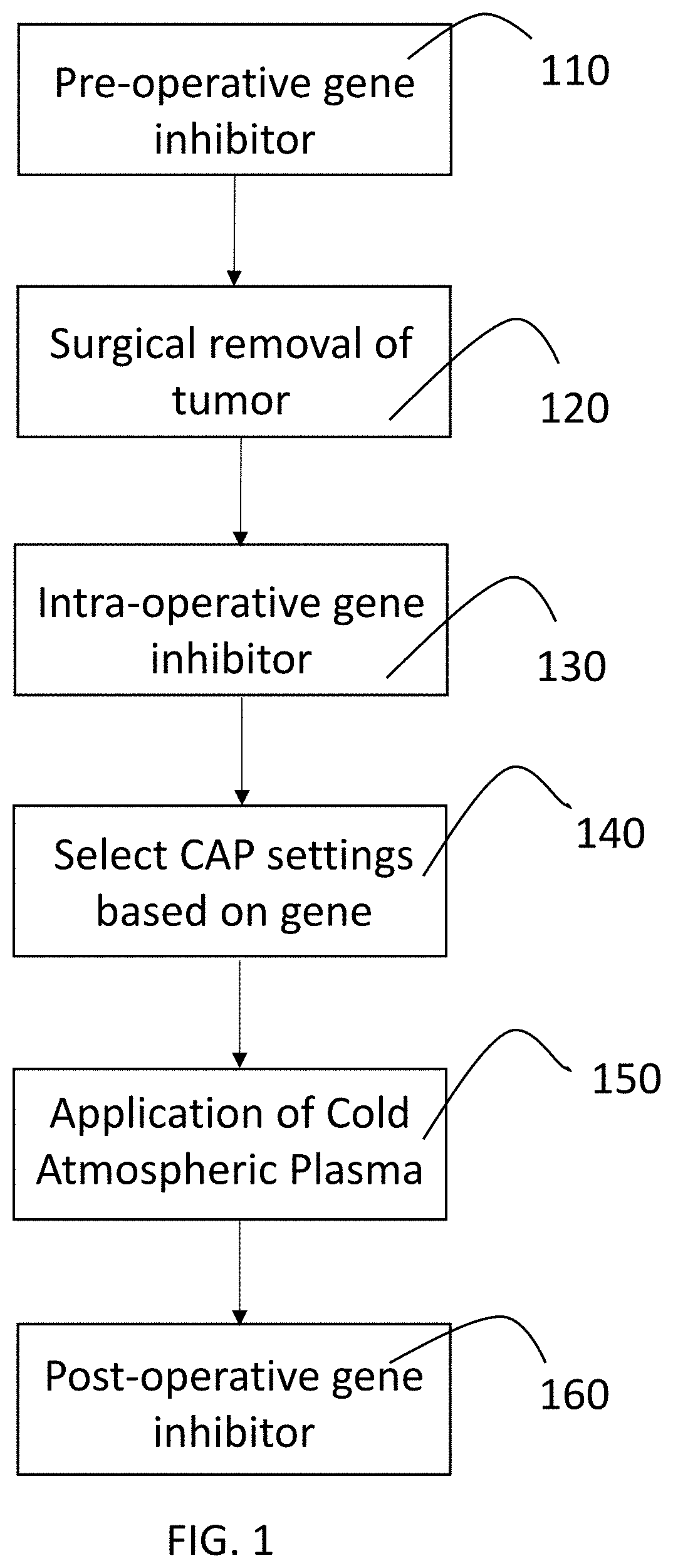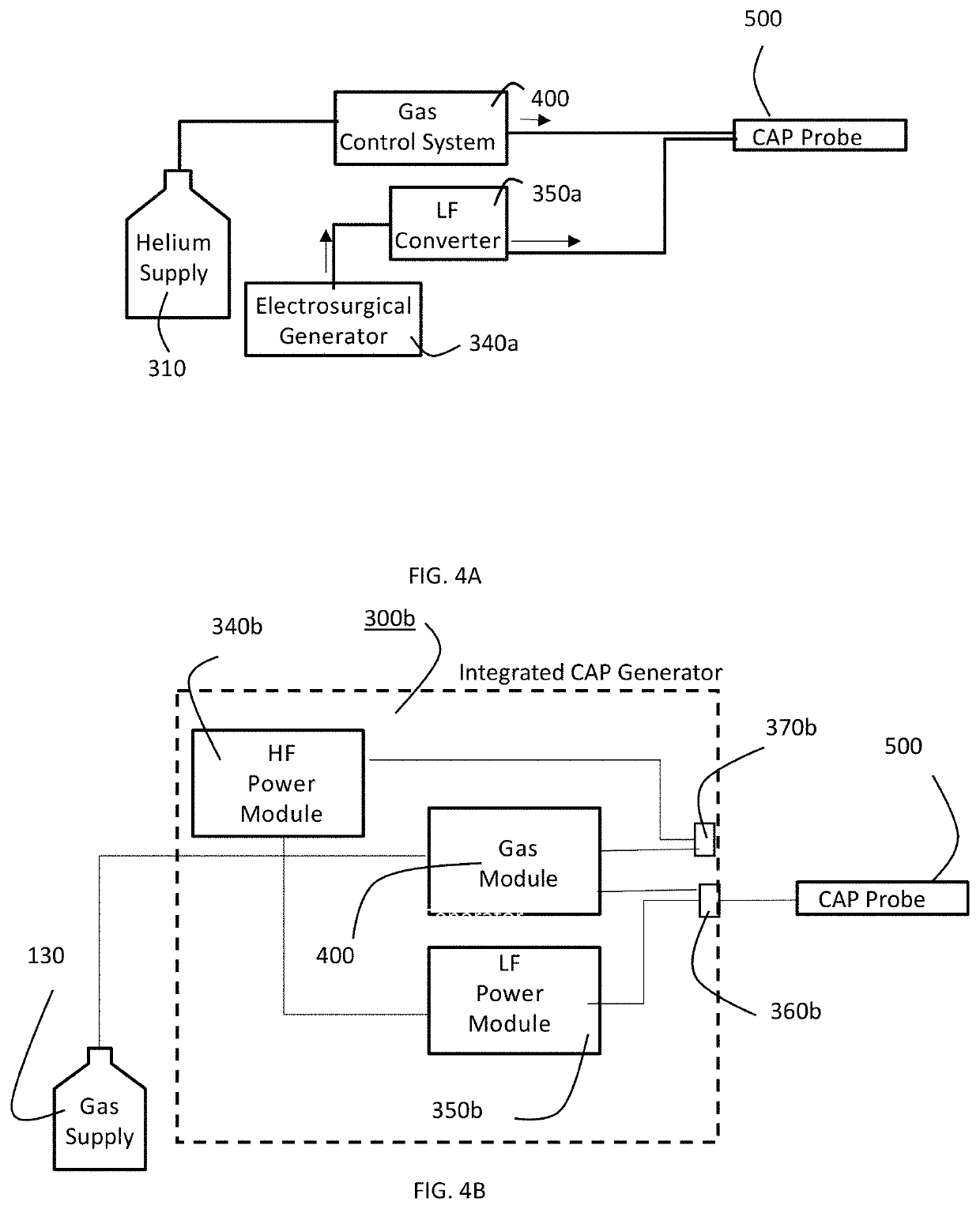Method for treatment of cancer with combination of cold atmospheric plasma and a gene inhibotor
a technology of cold atmospheric plasma and cancer, which is applied in the field of systems and methods for treating cancer with cold atmospheric plasma, can solve the problems of limited success of cyclin dependent kinases (cdk) or cell cycle regulators, the molecular mechanism of such survival in these cells has not been systematically investigated, and the majority of breast cancer cells often undergo apoptosis, etc., and achieves the effect of improving the potency of cap treatment, improving the survival rate and improving the survival ra
- Summary
- Abstract
- Description
- Claims
- Application Information
AI Technical Summary
Benefits of technology
Problems solved by technology
Method used
Image
Examples
Embodiment Construction
>[0030]Breast cancer is the leading cause of cancer death among women. Predominantly, the poor prognosis is due to the triple-negative breast cancer characterized by the absence or low-level expression of estrogen (ER), progesterone (ER), and HER2 receptors. Cold atmospheric plasma (CAP) delivered to cancer cells induces cell death in triple-negative breast cancer cell line without thermal damage. The present inventors investigated the gene expression profile when CAP is applied by screening the expressions of apoptotic and oxidative stress related gene markers in breast cancer cell lines after CAP treatment to determine the molecular mechanism of CAP induced cell death. Six different types of breast cancer cell lines including MCF-7 and T-47D (luminal A: ER+PR+ / −HER2−), BT-474 (luminal B: ERVR+ / −HER2+), SK-BR-3 (ER−PR−HER2+), MDA-MB-231 and Hs578T (basal-like: ER−PR−HER2−) were tested with CAP at two power settings (80 p and 120 p, which are approximately 15 W, and 28 W respectivel...
PUM
| Property | Measurement | Unit |
|---|---|---|
| quantitative real time polymerase chain reaction | aaaaa | aaaaa |
| quantitative real time polymerase chain reaction | aaaaa | aaaaa |
| quantitative real-time | aaaaa | aaaaa |
Abstract
Description
Claims
Application Information
 Login to View More
Login to View More - R&D
- Intellectual Property
- Life Sciences
- Materials
- Tech Scout
- Unparalleled Data Quality
- Higher Quality Content
- 60% Fewer Hallucinations
Browse by: Latest US Patents, China's latest patents, Technical Efficacy Thesaurus, Application Domain, Technology Topic, Popular Technical Reports.
© 2025 PatSnap. All rights reserved.Legal|Privacy policy|Modern Slavery Act Transparency Statement|Sitemap|About US| Contact US: help@patsnap.com



